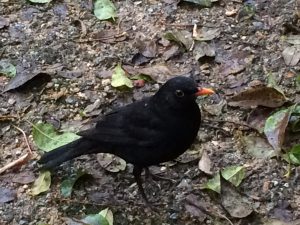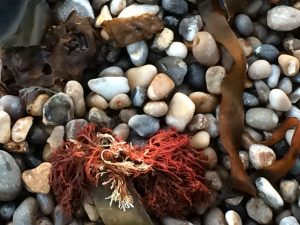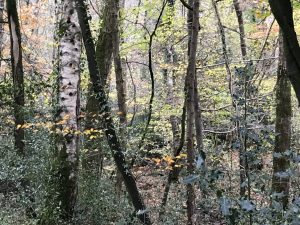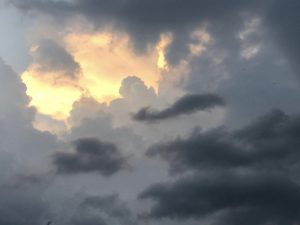What I appreciate about writing a blog is its flexibility, so here is a chance to be a ‘fly on the wall’ to some conversations. We have both been grappling with the concept of decolonisation in music and music education in our own research and have had a chance to explore more through the Music Research Network reading group. These conversations are not about answers but about the struggle and the excitement of that journey of discovery. As a start, it may be helpful to have a look at this clip to have an indication of some of the issues we are thinking about: ‘Rosie Bergonzi – I’m not a hashtag’
Ursula: I am in a process of trying to understand the concept of decolonisation at the moment. In particular, I am trying to understand what decolonising music education might mean, for me, for curriculum, for assessment, for research, for students I might work with. Learning more about this in the last year has made lots of the work I’ve been involved with in the past more complex, more problematic. I am writing from a place of deep uncertainty, but as Nancy and I discussed what we might write for this blog, she posed a question which was about when music could be decolonising. I am still not quite sure what this might mean, but I have had an experience recently in my PhD research which felt like an example of working in a more equal space.
Nancy: Our discussions recognised that running discourse on matters pertaining to decolonisation felt, for me at least, too ominous to engage with. It is hard to talk about decolonising without thinking of colonising, if nothing else, to make sure one does not fall back into the same trap. Many would agree that there is no justification for any kind of colonisation, overt or covert, intended or unintended. Unfortunately for me, the more I critically examined decolonisation (de-colonisation, de/colonisation or any other conceptual ways one can think of), I became disturbingly cognisant of how easy it is to use any available trump card, such as ‘I am the colonised one’ and ignore how I have also ‘colonised’. Therefore, my explorations of undoing, dismantling, deconstructing (or whatever other verb appropriate) has been and is a realisation that decolonisation is a rather complex phenomenon and may not be as ‘universal’ as it may appear. What it has affirmed however is how music and the creative arts are powerful tools for understanding and questioning both colonisation and decolonisation. The task is challenging, but not impossible.
Ursula: My recent experience involves a group of young people with autistic spectrum disorders, some professional musicians and me as a researcher, making our own music together from a range of different starting points. The group has been working together on Zoom for the past year, since their regular in-person sessions have been disrupted by the pandemic. What has struck me over the past half term in which I’ve been part of the group is an amazing level of acceptance of difference. We each (music leaders, young people, researcher) come differently to the group. We embody difference, we bring different instruments, different prior musical experiences and radically different levels of what would usually be considered instrumental ‘skill’. Our instruments include our voices and violins, cello, euphonium, drum machine, recorder, maracas, chime bars, oboe, keyboard, clarinet and flute.
To reflect on the diverse sound worlds we inhabit I made a short collage as part of my research activities, bringing together some of the different music that got referenced by the group in a single session:
Zoom itself as a platform and medium of music making regularly asserts itself in the sessions: connections break, sound is delayed or sometimes builds up an echo of its own that takes 30 seconds or more to clear. The only option in the midst of what might be chaos is to stop and listen. Each sound is listened to and perhaps it is this that validates it, that welcomes it into the space which is somehow constantly flattened by the vagaries of Zoom and who or what may be heard at any one time. The music leaders still hold a responsibility for the space, for keeping it safe and supportive, for opening it up musically, but the group is characterised more by responsiveness than by holding in a restrictive sense.
Nancy: I am similarly reminded of a time when my Dawida cousin was getting married in 2019 at the Eastern part of Kenya. I had the privilege of participating in the musical experience that accompanies this kind of social event. From a distance one could hear the women ululating at the arrival of the groom’s family, but something was peculiar. I was certain I was hearing the Obokano, the 8-string lyre from the Abagusii tribe found at the Western part of the country, considered one of the largest lyres in Africa (Varnum, 1971). It is at that point that I realised that this was in fact a ‘mixed’ marriage – East meeting West, in a manner of speaking. My excitement at the possibilities the music experience was going to offer puzzled my sister who was with me. But why should she be interested in two tribes coming together to marry when we are products of a similar kind of union? Encountering ‘difference’ was not a new phenomenon for us. However, for my Dawida relatives it was a new and novel experience which meant that it was potentially an emergent one. They were set to encounter their ‘difference’ in an unanticipated manner, and I was getting a front seat view of it unfolding before me.
I therefore note what you mention of music leaders and their responsibility within a musical space and appreciate the lead Abagusii musician who essentially kept the entire event coherent through music, even in the face of what may have appeared as chaos. He facilitated various ‘musical conversations’ despite the differences between the two cultures in various ways. He led everyone in song as he played the Obokano, determining the pace of engagement while at the same time listening to the negotiated space. He played his instrument to Dawida songs and to Abagusii songs, to secular songs and religious songs. He created new songs, adopted old ones, extended new meanings and overlooked others that were not relevant to the music event. This technical competence and flexibility was fascinating to observe (though I imagine very few people were observing this master at work like I was). For me, he was a true example of leading everyone in dealing with ‘difference’ and it was liberating. Having said that, one could argue that there was some form of overt control, directorial, centralised domination by this Abagusii master musician of the musical proceedings of the day. Or was it? Was it ‘colonial’ when we all joined in ever so willingly, whether or not we knew how to? Is the responsibility to lead an encounter so as hold all entities coherent within necessarily ‘colonial’?
Ursula: I have also wondered about these questions, both within immediate acts of music leadership, but also in the wider context of my work – is it fundamentally a ‘colonial’ practice? In the past I have worked with mostly classically trained musicians in a diversity of settings in the UK. My own education has mostly been in Western Art Music – what is often referred to as classical music, including, for me, instrumental tuition, choral training and learning about the standard European canon of composers from Bach to Beethoven, Brahms and Bartόk. Noted, it’s easier to run off a list of men whose name begins with B than it is to include a woman in the list, but with a bit of head scratching I might include Amy Beach and Lili Boulanger. It still took me a surprisingly long time to notice that all those composers had white skin. Why did it take so long? Probably because I was white and all the musicians I was working with were white – not exclusively, but predominantly. Thank you in particular to musician Rosie Bergonzi (see the YouTube clip above) for calling me and others out on this at a networking event last year when she reflected on the pervasiveness of an informal apprenticeship culture amongst creative music leaders which favoured a replication of the same bodies taking up their places at the front of room. Had we really not noticed that everyone else there was white? I guess we hadn’t.
I don’t think I’ve been totally oblivious to the problematics of this as I’ve built partnerships with communities in, for example, Hackney, Tower Hamlets or North Westminster. I’ve considered it as I’ve thought together with musicians, colleagues and project partners about working in relational ways, about co-creativity, about the idea of ‘access’ and the positives and negatives this word might carry. I’ve supported musicians as they feel themselves moving into their own spaces of vulnerability as they connect with different participants. I’ve arranged collaborations between those classically trained musicians and musicians from other cultures. As I make this list, I am reminded of Rosabal-Coto (2019) who talks about the habit of music scholarship always looking for ‘the good’ in music learning and music socialisation, and asks whether the recent burgeoning of interest in decolonisation in music education may simply be the latest manifestation of this: how many different agendas have I tried to stick myself onto over the years while I try and find validation and resources for this work? Is this just the latest one?
Nancy: These are difficult questions we must keep asking ourselves especially because for a large part of our professional lives as musicians or music teachers we have been responsible for musical conversations in various ways. But I think there is a distinction between responsibility and responsibility that dominates, though it is a fine line. It easily becomes apparent, often tacitly, when that line has been crossed. The effect is often recognisable – the weakening conversations and connections, the disruption to the rhythm of the event, the pregnant silences… I think music making has a way of making us listen, to encounter otherness and difference (sonorous, physical or affective) and to take responsibility in different ways at different points of the engagement. For instance, on that joyful day we danced and sang songs we had never heard in our lives because we were led in an inviting sort of way and were willing to follow. I remember watching the person next to me sway in dance and I imitated. I could hear the responses to the unfamiliar songs fumbling through a string of syllables of words that only made sense to those who understood the language. We were all spectators (watching and listening to each) and participants (responding and moving with one another) at the same time more so because of the differences we were negotiating within that musical space. We gave, we took, and we laughed. We were in full flow musical conversation.
Ursula: There is plenty to problematize about the PhD project I’ve reflected on here through a decolonising lens, but after a year of constant uncertainty in which questions of decoloniality have layered on top of radical upheavals in all other areas of musical life, my non-critical response was simply that it was a relief to be able to join this space for a time, to be accepted in my own uncertainty, and I felt that I had joined others who were happy to be there, not quite knowing.
Nancy: I think one’s willingness to join in and participate is such a crucial part of being able to have conversations especially within safe spaces such as those found in the creative arts. It’s not about how much or how well one can articulate within such a space but about being willing to be open to the experience, to listen, recognise difference, engage with each other and allowing oneself to be transformed. This approach to conversation affirms our humanity.
So here is our invitation to you. Let’s talk…
References
Rosabal-Coto, G. (2019). The day after music education. Action, Criticism, and Theory for Music Education, 18(3), 1–24. Retrieved from http://act.maydaygroup.org/volume-18-issue-3/act-18-3-rosabal-coto/
Varnum, J. (1971). The Obokano of the Gusii: A Bowl Lyre of East Africa. Ethnomusicology, 15(2), 242-248. doi:10.2307/850469



 The light bulb is a symbol of knowledge and thought. The glass enclosure represents the education system and its boundaries. One boundary that challenges me is education and teaching’s non-neutrality and that I might unconsciously exclude children who do not share my ways of being as a middle class, white, settler-Canadian. The light bulb is my own space as an object/relation model. But the boundaries should not be solely determined by me – a relational space creates an environment for students’ identities and knowledges in a way that fosters agency and relationships. With this in mind, the globe of the bulb is breaking to symbolise the disruption of my own Eurocentric norms. This is a reflection of my developing openness and understanding of more holistic approaches to learning. The honeybee trapped in the bulb symbolises personal power and community. I have come to learn that power will be in all relationships and therefore will be present in my teaching. I am learning to recognise that I can use power positively to equalise relationships in the classroom through co-constructing meaning with and through my students’ funds of knowledge. Likewise, the roots symbolise my own networks of funds of knowledge, but also serve as a reminder to delve deeper when connecting to others. Lastly the colour scheme I have chosen is shades of yellow, black, grey, brown and a hint of blue. Yellow represents my own enlightenment as I develop an awareness of this new knowledge; the darker shades symbolise the tendency to understand differences as distinctions.
The light bulb is a symbol of knowledge and thought. The glass enclosure represents the education system and its boundaries. One boundary that challenges me is education and teaching’s non-neutrality and that I might unconsciously exclude children who do not share my ways of being as a middle class, white, settler-Canadian. The light bulb is my own space as an object/relation model. But the boundaries should not be solely determined by me – a relational space creates an environment for students’ identities and knowledges in a way that fosters agency and relationships. With this in mind, the globe of the bulb is breaking to symbolise the disruption of my own Eurocentric norms. This is a reflection of my developing openness and understanding of more holistic approaches to learning. The honeybee trapped in the bulb symbolises personal power and community. I have come to learn that power will be in all relationships and therefore will be present in my teaching. I am learning to recognise that I can use power positively to equalise relationships in the classroom through co-constructing meaning with and through my students’ funds of knowledge. Likewise, the roots symbolise my own networks of funds of knowledge, but also serve as a reminder to delve deeper when connecting to others. Lastly the colour scheme I have chosen is shades of yellow, black, grey, brown and a hint of blue. Yellow represents my own enlightenment as I develop an awareness of this new knowledge; the darker shades symbolise the tendency to understand differences as distinctions.  The light bulb remains a symbol of knowledge and my learning in this course and throughout life. It is now illuminated with a bright white light that shines through the translucent paper representing the process of my teacher beliefs and ways of being and doing expanding to include more holistic approaches to learning. It continues to represent the education system and its boundaries and the bulb continues to break but does not shatter because my privileges and norms may continue to be unintentionally concealed from me. The translucent paper illustrated the disruption of my Eurocentric norms and the use of my own identity to start incorporating relational and decolonial pedagogies in my everyday teaching. The honeybee is still trapped but its new position symbolises my longing to share power with the students rather than using my power to unknowingly silence my students’ voices. I recognise that power will be present in all relationships and that I can have a role in sharing and distributing this power. With this in mind, flowers have blossomed from the roots in my drawing. This network of plant growth symbolises my own funds of knowledge and how they might connect to students’ funds of knowledge. The splotches of colour that surround the light bulb represent what it means to be literate – not simply the ability to read and write, but also environmental, racial, emotional, technological and many more literacies. Lastly, critical literacy is a social practice; it is part of our everyday lives as we “read” the world around us. I want to challenge myself to act on these new understandings and to be more successful in developing meaningful learning experiences that evoke engaged responses from my students.
The light bulb remains a symbol of knowledge and my learning in this course and throughout life. It is now illuminated with a bright white light that shines through the translucent paper representing the process of my teacher beliefs and ways of being and doing expanding to include more holistic approaches to learning. It continues to represent the education system and its boundaries and the bulb continues to break but does not shatter because my privileges and norms may continue to be unintentionally concealed from me. The translucent paper illustrated the disruption of my Eurocentric norms and the use of my own identity to start incorporating relational and decolonial pedagogies in my everyday teaching. The honeybee is still trapped but its new position symbolises my longing to share power with the students rather than using my power to unknowingly silence my students’ voices. I recognise that power will be present in all relationships and that I can have a role in sharing and distributing this power. With this in mind, flowers have blossomed from the roots in my drawing. This network of plant growth symbolises my own funds of knowledge and how they might connect to students’ funds of knowledge. The splotches of colour that surround the light bulb represent what it means to be literate – not simply the ability to read and write, but also environmental, racial, emotional, technological and many more literacies. Lastly, critical literacy is a social practice; it is part of our everyday lives as we “read” the world around us. I want to challenge myself to act on these new understandings and to be more successful in developing meaningful learning experiences that evoke engaged responses from my students.











